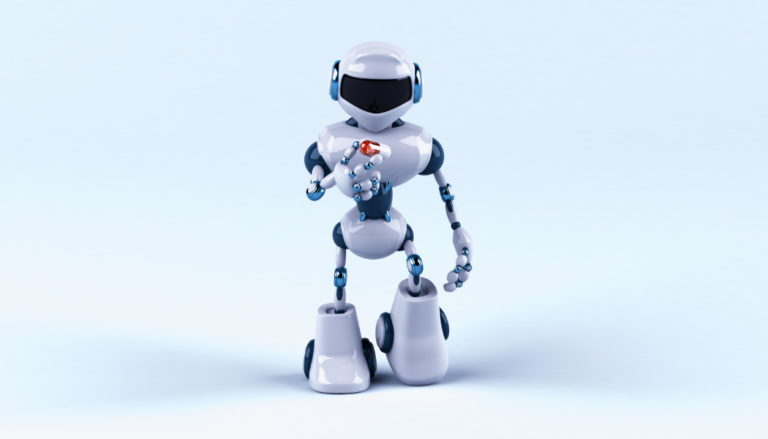-
Arif Uz Zaman Badhon
- Published Date:

Share This
G enerative AI is reshaping the world by enabling machines to create text, images, audio, video, and even software code. From automating customer support with AI chatbots to designing new drug molecules, the applications of Generative AI are vast and rapidly expanding.
In this blog, we’ll explore:
- Practical Use Cases: Real-world applications in businesses
- Current Implementations: How companies are using it today
- Future Possibilities: What’s next for Generative AI?
- Building a Simple GenAI Model: Hands-on coding example
Let’s dive into the details.
1. Use Case 1: Generative AI in Customer Support (Chatbots & Virtual Assistants)
Current Business Application
Customer support is one of the biggest areas benefiting from Generative AI. Companies like OpenAI (ChatGPT), Google (Bard), and Microsoft (Copilot) are using large language models (LLMs) to automate customer interactions.
Many businesses are integrating AI chatbots into their websites and apps. E-commerce giants like Amazon and Shopify use AI-powered bots to:
- Answer FAQs
- Assist customers with product searches
- Provide personalized recommendations
- Handle complaints efficiently
Code Example: Simple AI Chatbot using GPT
Here’s how you can build a basic AI chatbot using OpenAI’s API:
import openai
def chatbot(prompt):
response = openai.ChatCompletion.create(
model="gpt-4",
messages=[{"role": "user", "content": prompt}]
)
return response["choices"][0]["message"]["content"]
user_input = input("You: ")
bot_response = chatbot(user_input)
print(f"AI: {bot_response}")
👉 How it Works: This simple script sends a user query to OpenAI’s GPT model and retrieves a response. You can integrate this into a web app or a mobile application.
Future Possibilities
- Multimodal Assistants: AI that understands voice, text, and images.
- Emotionally Intelligent Bots: AI that can detect emotions and adjust responses accordingly.
- AI in Metaverse: AI-powered virtual assistants in VR/AR environments.
2. Use Case 2: AI-Generated Code (Software Development Automation)
Current Business Application
Developers are leveraging AI-powered coding tools like GitHub Copilot (by OpenAI), Amazon CodeWhisperer, and Tabnine to accelerate software development.
These AI models help by:
- Autocompleting code
- Suggesting optimized functions
- Writing boilerplate code
- Debugging existing scripts
Companies like Microsoft and Google are integrating AI-assisted coding into IDEs like VS Code and JetBrains.
Code Example: AI-Powered Code Generation
Below is an example of how to use OpenAI’s API to generate Python code automatically:
import openai
def generate_code(prompt):
response = openai.ChatCompletion.create(
model="gpt-4",
messages=[{"role": "user", "content": f'Write a Python function to {prompt}'}]
)
return response["choices"][0]["message"]["content"]
task = "sort a list of numbers"
print(generate_code(task))
👉 How it Works: This script generates Python code for any given task, making software development faster and more efficient.
Future Possibilities
- AI-Generated Entire Software Systems: AI creating full applications from requirements.
- Automated Debugging and Testing: AI identifying and fixing errors before deployment.
- Code Refactoring at Scale: AI improving legacy systems with optimized modern code.
3. Future of Generative AI: What’s Next?
Generative AI is evolving rapidly, and several key advancements are expected in the near future:
1. Personalized AI Assistants
Instead of general AI models, businesses will deploy highly customized AI that understands company-specific workflows.
2. AI in Creativity (Art, Music, Video)
Tools like DALL·E (for images), Synthesia (for AI-generated videos), and AIVA (for AI music composition) are paving the way for automated content generation.
3. AI in Drug Discovery & Healthcare
Pharmaceutical companies are using AI to generate new drug molecules and predict disease outcomes, reducing drug development time.
4. AI-Powered Autonomous Agents
AI-driven autonomous agents will take over complex decision-making, from stock market predictions to automated legal document processing.
4. How to Build a Simple Generative AI Model
You can create a basic Generative AI model using GPT-4 and fine-tune it for a specific task.
Steps to Create a Simple Text-Generating AI
Step 1: Install OpenAI’s Library
pip install openai
Step 2: Use OpenAI’s API to Generate Text
import openai
def generate_text(prompt):
response = openai.ChatCompletion.create(
model="gpt-4",
messages=[{"role": "user", "content": prompt}]
)
return response["choices"][0]["message"]["content"]
print(generate_text("Write a short story about AI in the future."))
Step 3: Fine-Tuning Your Model
To train a model on custom Data, you need to:
- Prepare your dataset in JSON format.
- Use OpenAI’s fine-tuning API.
- Deploy the model for real-world use.
Final Thoughts
Generative AI is revolutionizing multiple industries, from customer service and software development to healthcare and creative arts. Businesses adopting AI-driven solutions will see greater efficiency, automation, and innovation.
Key Takeaways
✅ AI Chatbots are transforming customer support.
✅ AI-assisted coding boosts software development productivity.
✅ Future AI applications include personalized AI assistants, AI in creativity, and healthcare innovations.
✅ You can start building AI models today using OpenAI APIs.
💡 Are you ready to integrate Generative AI into your business? The future is AI-powered, and now is the best time to start leveraging its potential.